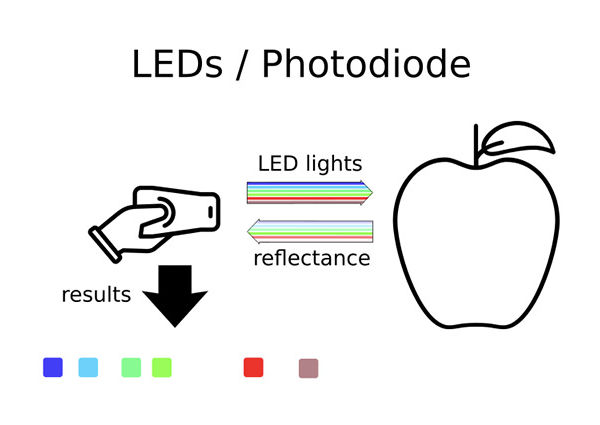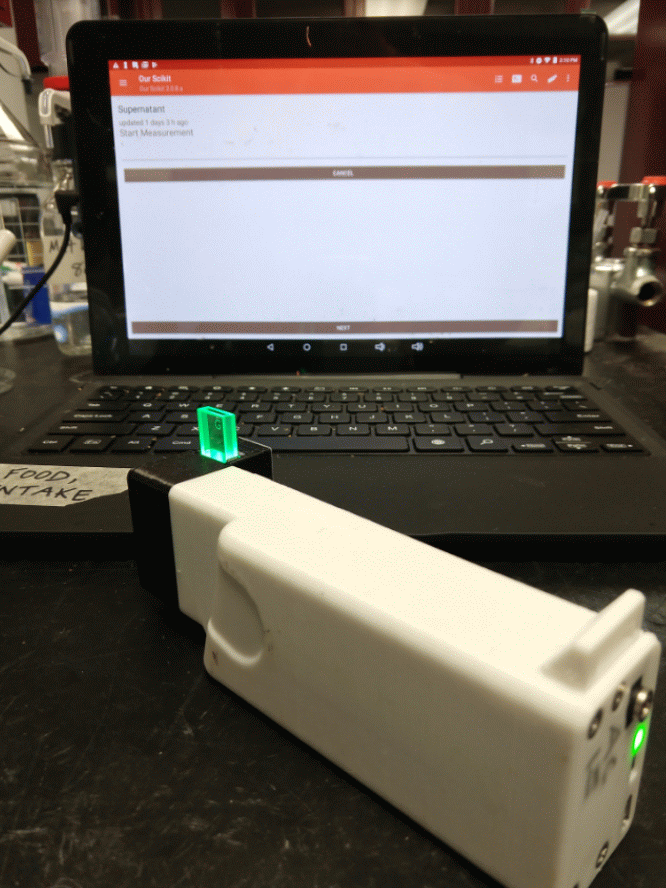
The bionutrient meter is actually, in many ways, a shockingly simple device. It has lights (LEDs - light emitting diodes) that emit light at very specific wavelengths (fancy sciency word for colors), which then bounce off objects (like carrots, or carrot pulp, or spinach, or soil), while some of it is absorbed (turned into other forms of energy like heat) by the object, and then a light sensor in the device reads how much light bounces back (for each wavelength, multiple times, very quickly).

Why this matters (light bouncing off) is because this is actually a characteristic of objects that is directly correlated to the chemical compounds that the object is made of. So in the case of food, there are known correlations between light reflectance, at specific wavelengths, and the amount of different nutrients found in that food (vitamins, antioxidants, and aromatic compounds [things that smell, and also usually contribute to taste and health-giving attributes of food], to name a few). What makes this extra complicated though, is that these light-bouncing characteristics and compounds “overlap” with each other - so we need to look at lots of data to try to parse out what is causing the response we’re seeing.
It's not all wires and lights in a box, though
In addition to developing the device and running the lab, with the help of supporters and donors, we’re working to build out a larger community to ensure that we can continue to push the technology forward and unlock new capabilities at competitive prices to further drive our ability to understand quality.

